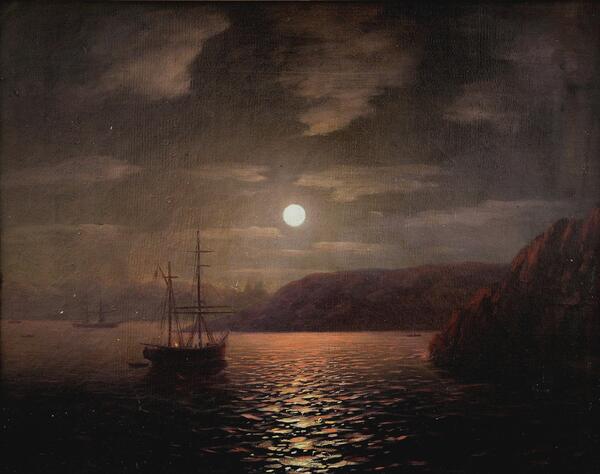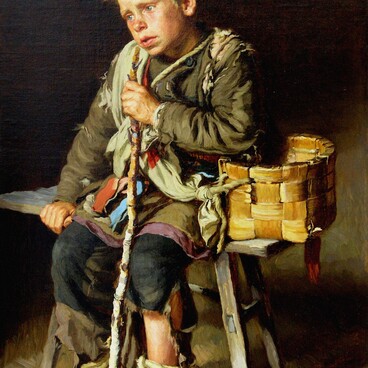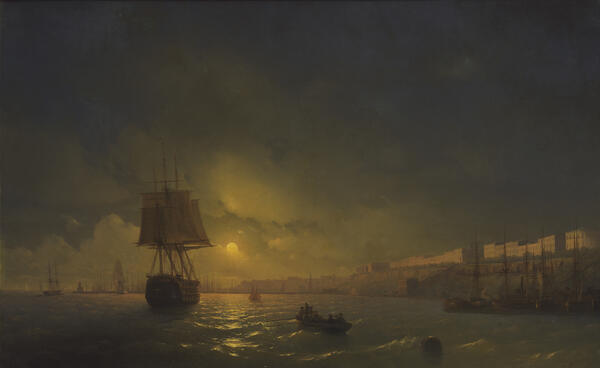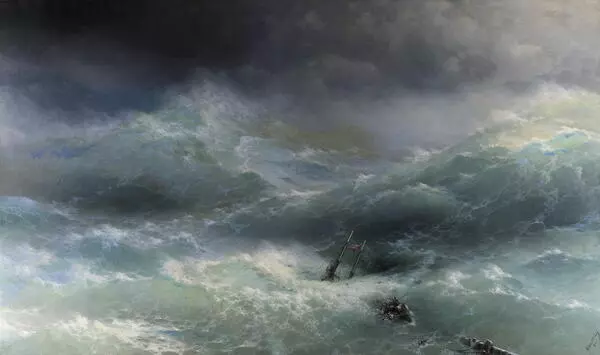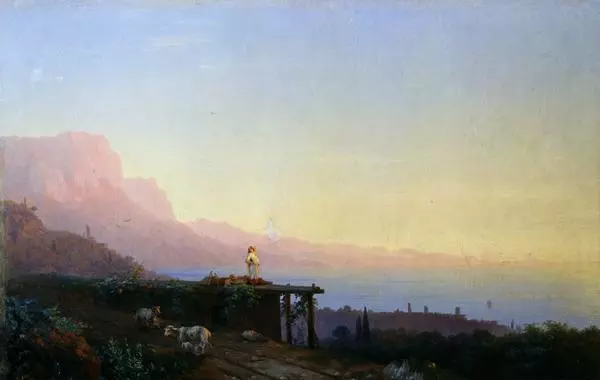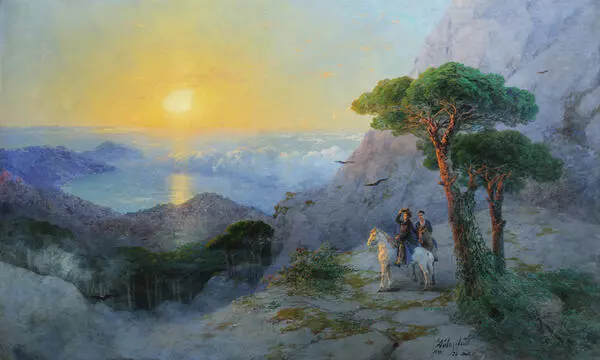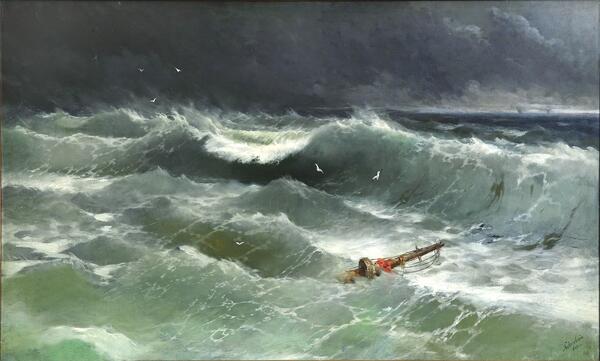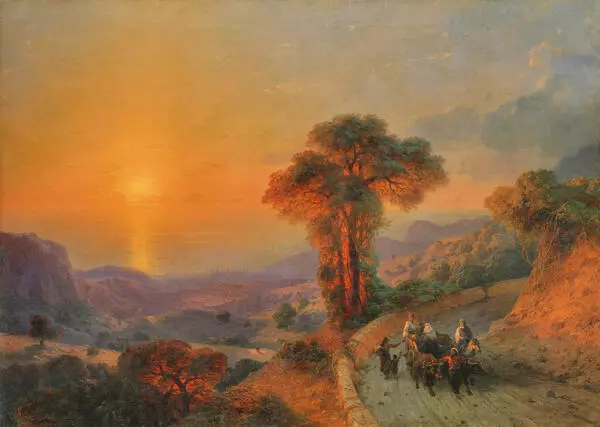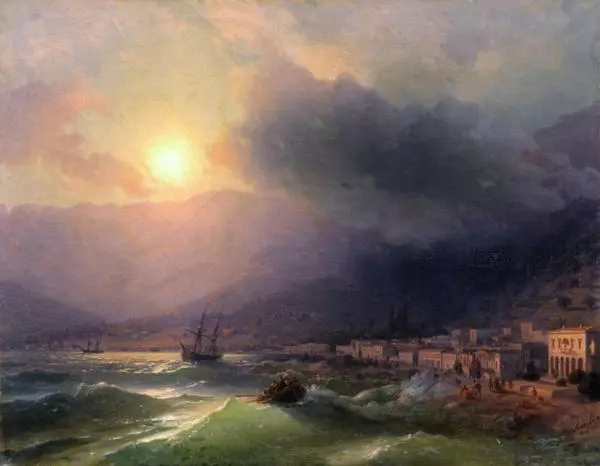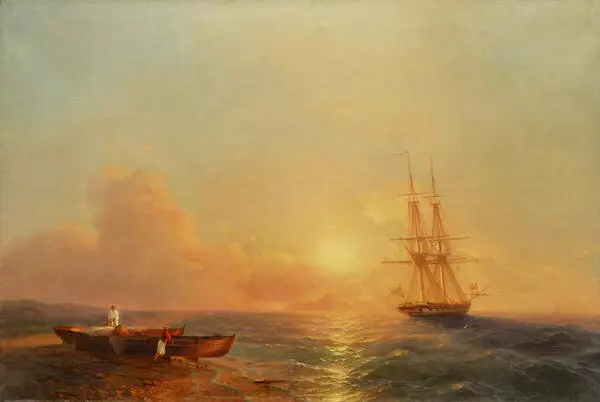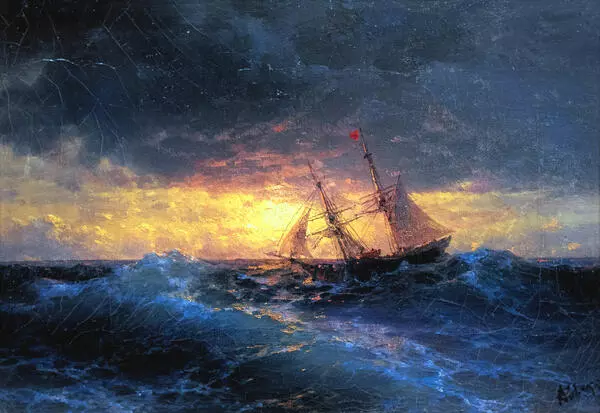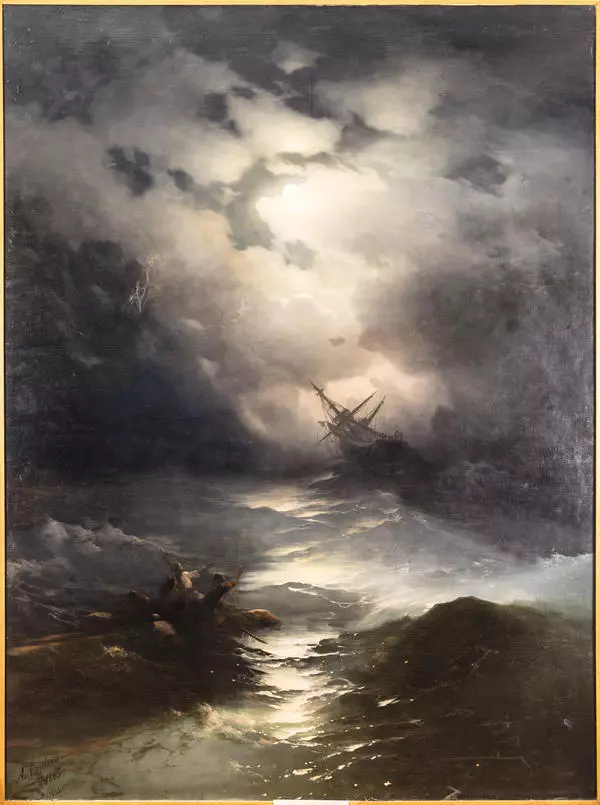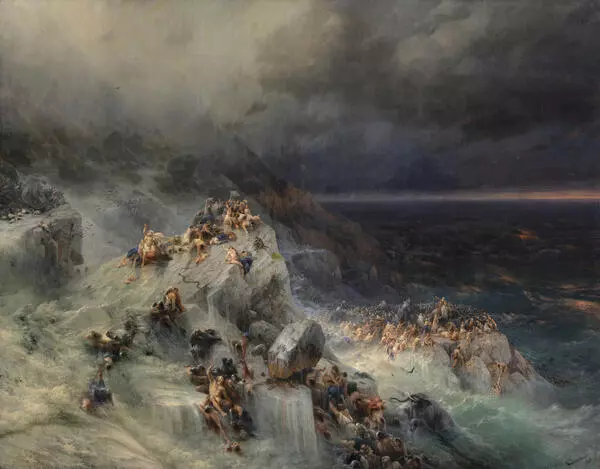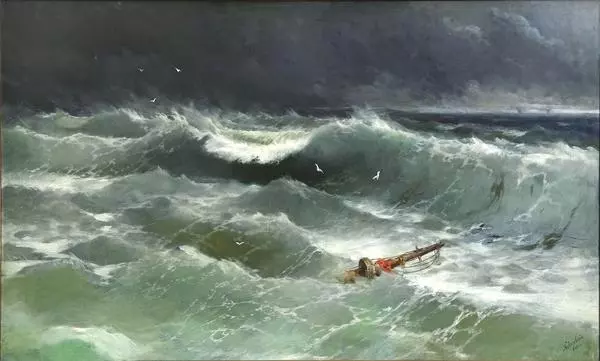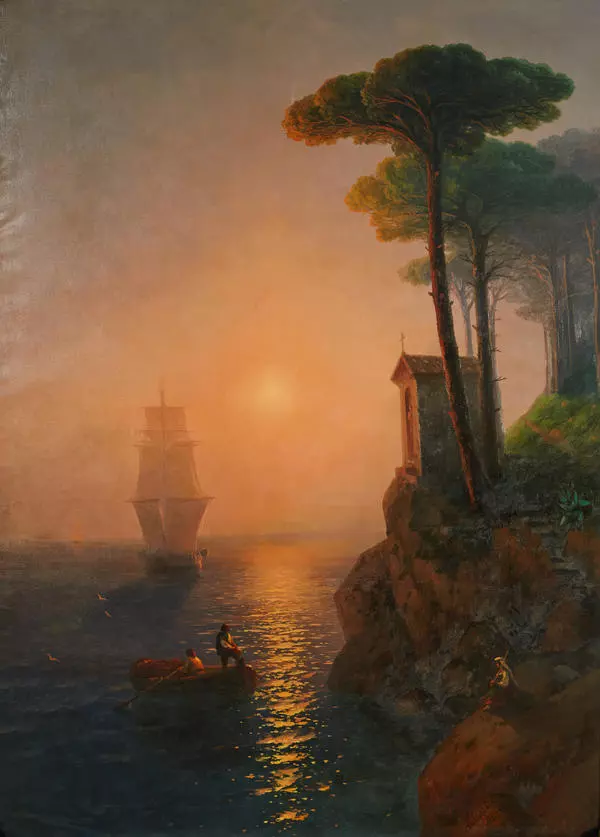Ivan Konstantinovich Aivazovsky, the future marine painter, was born in an Armenian family in Feodosia in 1817.
He revealed his artistic and musical abilities at an early age. His first sketches appeared on the walls of city houses and on coastal rocks. These drawings were noticed by the Feodosia architect Yakov Koch. He was the one to give the young artist his first lessons in craftsmanship. During Ivan Aivazovsky’s studies in the Simferopol gymnasium, teachers recommended him for admission to the Imperial Academy of Arts in St. Petersburg.
There he began his studies in the landscape class of the painter Maxim Nikiforovich Vorobyov. Later, he was assigned to the class of battle painting led by Professor Alexander Ivanovich Sauerweid.
After a while, Aivazovsky received the Grand Gold Medal for the painting “Calm Sea”.
Naval themes in painting were a great success, which gave Ivan Aivazovsky the opportunity to graduate from the Academy of Arts two years earlier.
From 1838, the artist lived in Crimea, where he painted seascapes. He repeatedly participated in military actions on the coast of Circassia.
Aivazovsky’s career was successful. He was an Actual Privy Counselor, which corresponded to the rank of admiral. In 1864, he was granted hereditary nobility.
In 1840, Aivazovsky went to live and work in southern Italy, in the city of Sorrento.
In 1844, the master returned to Russia and took up the post of Painter of the Main Staff of the Russian Navy. In 1847, he became Academician of the Imperial Academy of Arts, honorary member of the Academies of Arts in Amsterdam, Rome, Paris and Stuttgart.
In 1845, he participated in a maritime geographical expedition to the shores of Asia Minor.
Upon his return, the painter settled in Feodosia, built a house on the city embankment and bought an estate in the village of Shah-Mamai.
The painting “Lunar Night on the Black Sea”, which is part of the collection of the Alexander Grigoriev Art and History Museum, was painted during the artist’s life in Crimea.
Aivazovsky depicted the idyll of a sleeping sea surface. The outlines of a small schooner and a town in the distance can be seen through the moonlight.
This painting was transferred from Moscow in 1924,
and in 1930 it was exhibited at the 50th anniversary of the Feodosia Gallery,
which was opened on the initiative and with the material support of Ivan Aivazovsky.

